Digestive System Worksheet
The digestive system worksheet is a helpful resource for students and individuals seeking to enhance their understanding of this essential bodily system. Designed to provide a comprehensive overview of the organs, functions, and processes within the digestive system, this worksheet is an excellent tool for learners of all levels. Whether you are a student studying biology or health sciences, or simply someone curious about how your body works, this worksheet is an ideal entity to deepen your knowledge.
Table of Images 👆
- Digestive System Worksheet Answers
- Label Digestive System Diagram
- Human Digestive System Worksheet
- Digestive System Worksheets and Answers
- Unlabeled Digestive System Diagram Worksheet
- 7th Grade Body Systems Worksheets
- Digestive System Study Guide Worksheet
- Digestive System Diagram Worksheet
- Digestive System Worksheet Answer Key
More Other Worksheets
Kindergarten Worksheet My RoomSpanish Verb Worksheets
Cooking Vocabulary Worksheet
DNA Code Worksheet
Meiosis Worksheet Answer Key
Art Handouts and Worksheets
7 Elements of Art Worksheets
All Amendment Worksheet
Symmetry Art Worksheets
Daily Meal Planning Worksheet
What is the digestive system?
The digestive system is a complex system in the body that processes food and absorbs nutrients to supply the body with energy and essential building blocks for growth and repair. It includes organs such as the mouth, esophagus, stomach, small intestine, large intestine, liver, gallbladder, and pancreas, all working together to break down food into smaller molecules that can be absorbed into the bloodstream and utilized by the body for various functions.
What are the main organs of the digestive system?
The main organs of the digestive system include the mouth, esophagus, stomach, small intestine, large intestine, liver, gallbladder, and pancreas. These organs work together to break down food, absorb nutrients, and eliminate waste from the body.
What is the function of the mouth in the digestive system?
The mouth is the first part of the digestive system where food enters the body. Its main function is to physically break down food through chewing and mixing with saliva, which contains enzymes that start the chemical digestion process. The mouth also helps to form a bolus, which is a soft mass of chewed food that can be easily swallowed and passed down the esophagus to the stomach for further digestion and nutrient absorption.
What happens to food in the stomach?
In the stomach, food undergoes mechanical and chemical digestion. It is mixed with stomach acid and enzymes that break down proteins, fats, and carbohydrates. The stomach's muscular walls contract to churn and mix the food into a partially digested form called chyme. This partially digested mixture is then passed on to the small intestine for further digestion and absorption into the bloodstream.
What is the role of the small intestine in digestion?
The small intestine plays a crucial role in digestion by further breaking down food particles into nutrients that can be absorbed by the body. It is primarily responsible for the absorption of carbohydrates, proteins, fats, vitamins, and minerals to provide essential nutrients for energy and growth. Additionally, the small intestine produces enzymes and juices that assist in the digestion process, helping to extract nutrients from food and transport them into the bloodstream for distribution throughout the body.
What is the purpose of enzymes in the digestive system?
Enzymes in the digestive system play a crucial role in breaking down food into smaller molecules that can be absorbed by the body. Each enzyme is specific to a particular type of molecule, such as carbohydrates, proteins, or fats, and helps to catalyze the chemical reactions that break these complex molecules into simpler forms that can then be absorbed and utilized by the body for energy, growth, and repair.
How does the large intestine contribute to digestion?
The large intestine primarily absorbs water and electrolytes from the indigestible food residue that enters it from the small intestine. It also hosts a large population of bacteria that help break down any remaining nutrients and produce certain vitamins, such as vitamin K and some B vitamins. Additionally, the large intestine plays a crucial role in forming and expelling solid waste from the body through the process of defecation.
What is the function of the liver in the digestive system?
The liver plays a crucial role in the digestive system by producing bile, which helps in the digestion and absorption of fats. Additionally, it processes nutrients from the food we eat, detoxifies harmful substances, and stores vitamins and minerals for future use. The liver also regulates glucose levels in the bloodstream and produces proteins necessary for blood clotting and other bodily functions.
What is the role of the pancreas in digestion?
The pancreas plays a critical role in digestion by producing digestive enzymes that help break down carbohydrates, proteins, and fats in the small intestine. These enzymes are released into the small intestine to facilitate the process of digestion and help absorb nutrients from the food we eat. Additionally, the pancreas also produces insulin and glucagon, hormones that help regulate blood sugar levels and metabolism in the body.
How does the digestive system work together to break down and absorb nutrients from food?
The digestive system starts with mechanical digestion in the mouth as food is chewed and mixed with saliva, which contains enzymes that break down carbohydrates. Food then travels to the stomach, where it is mixed with gastric juice containing hydrochloric acid and enzymes that further break down proteins. Next, in the small intestine, bile from the liver and enzymes from the pancreas help break down fats, proteins, and carbohydrates into smaller molecules. These nutrients are then absorbed through the walls of the small intestine into the bloodstream and transported to cells throughout the body for energy and growth, while waste products are moved to the large intestine for elimination as feces.
Have something to share?
Who is Worksheeto?
At Worksheeto, we are committed to delivering an extensive and varied portfolio of superior quality worksheets, designed to address the educational demands of students, educators, and parents.

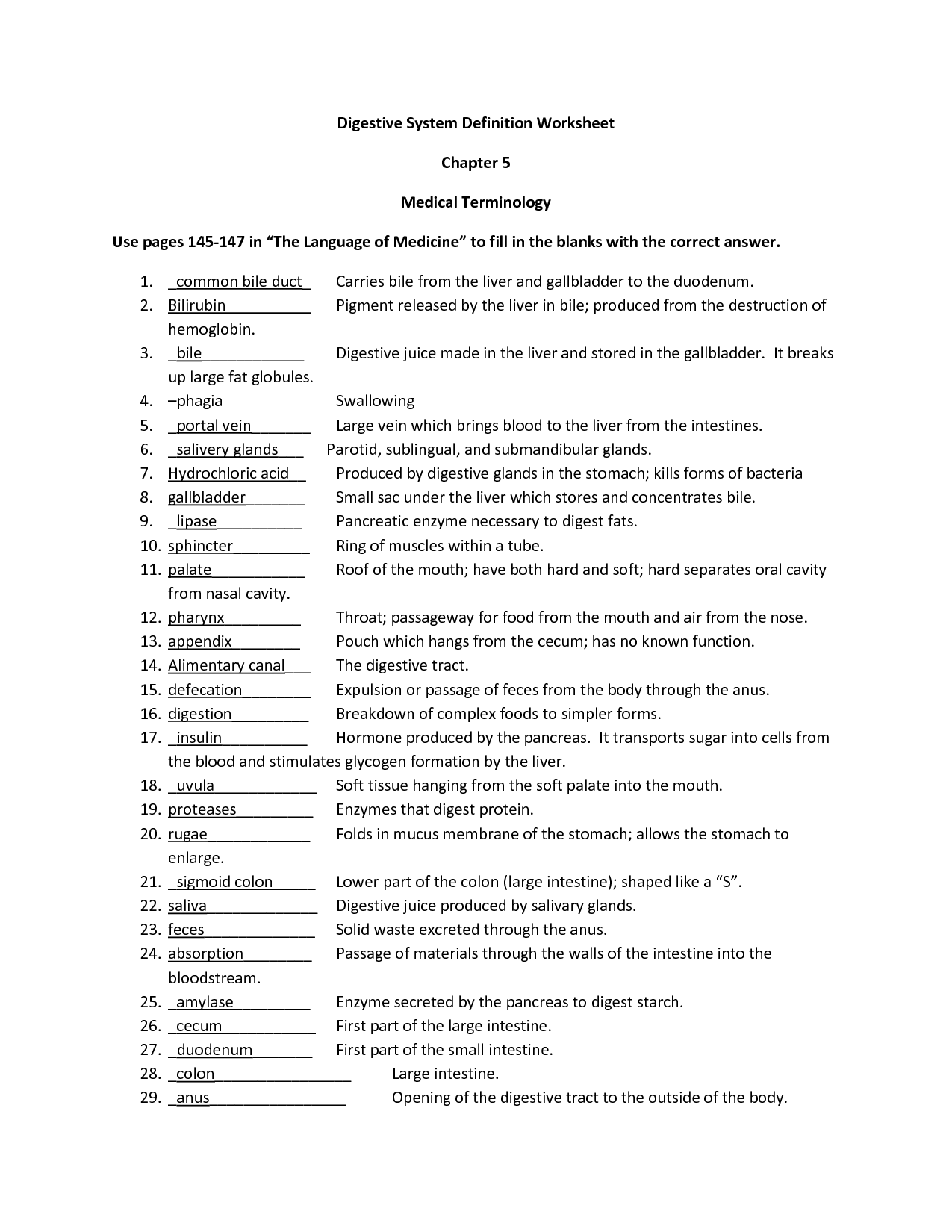



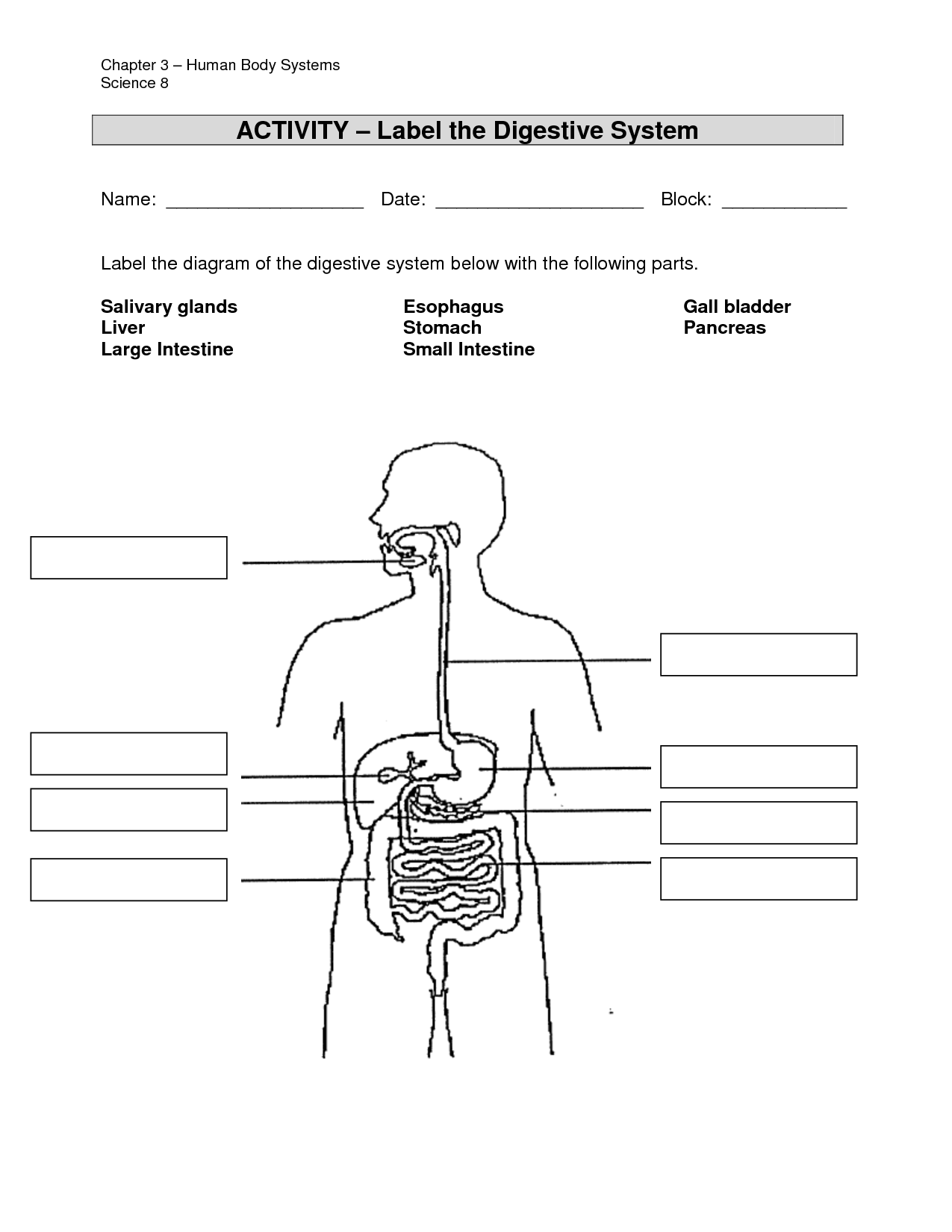
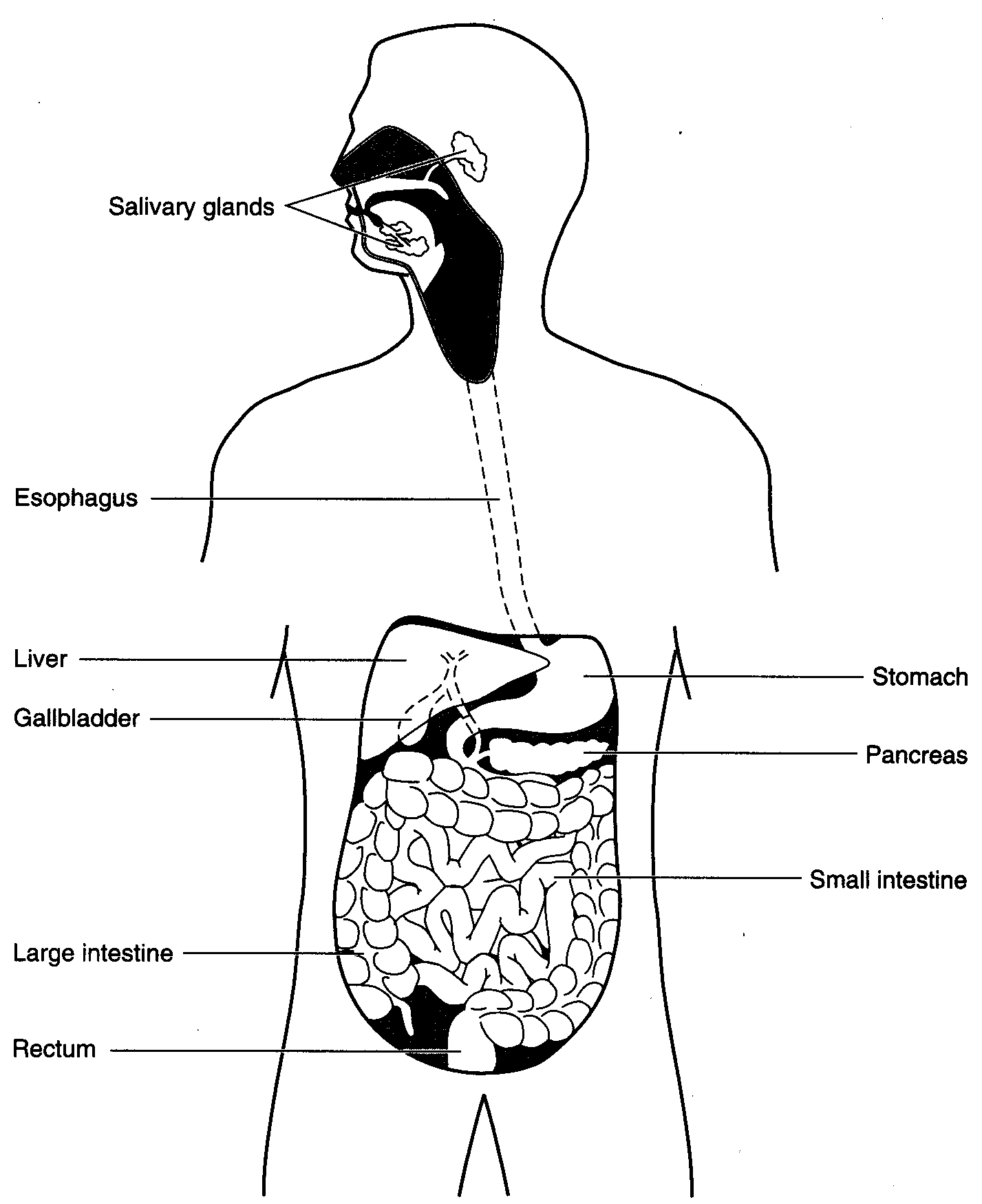
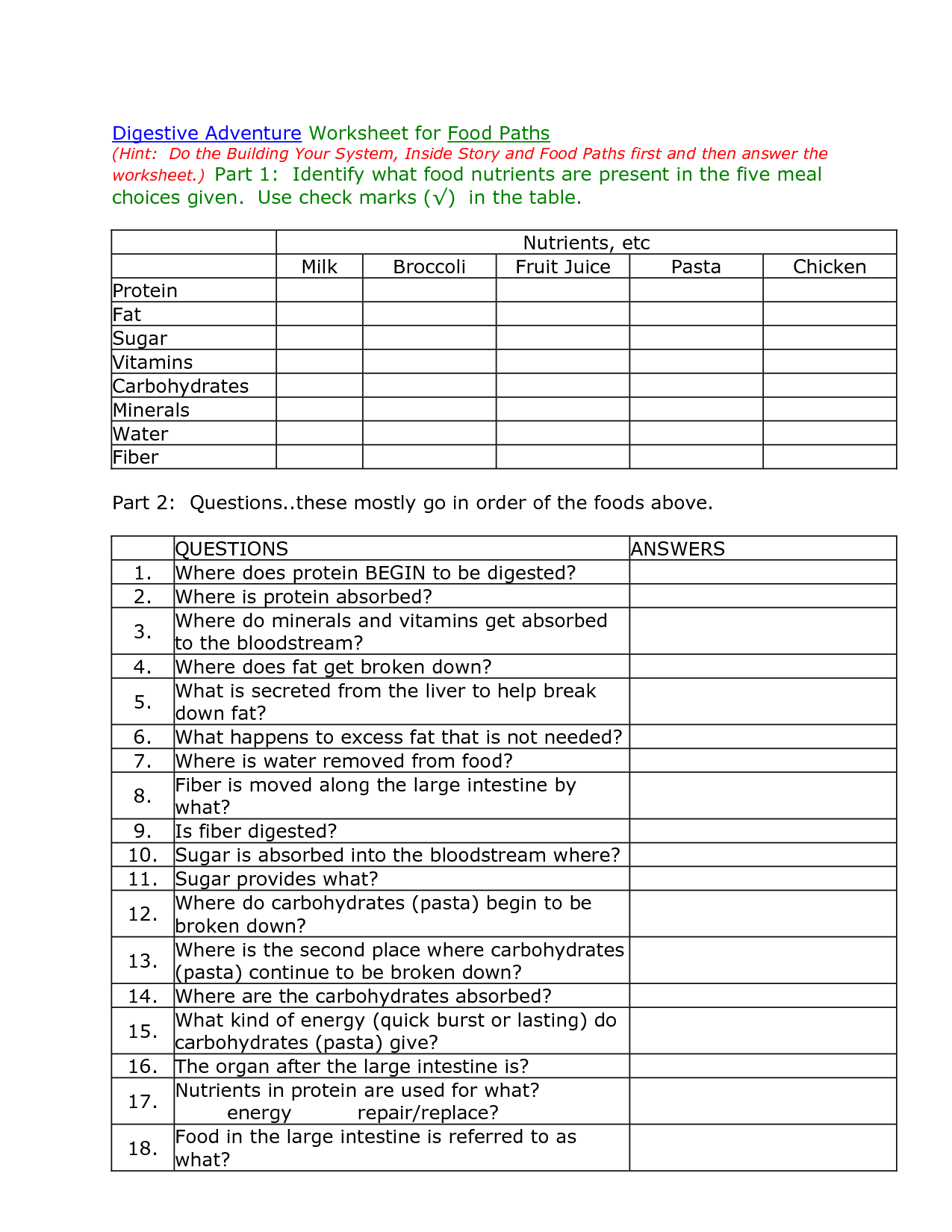
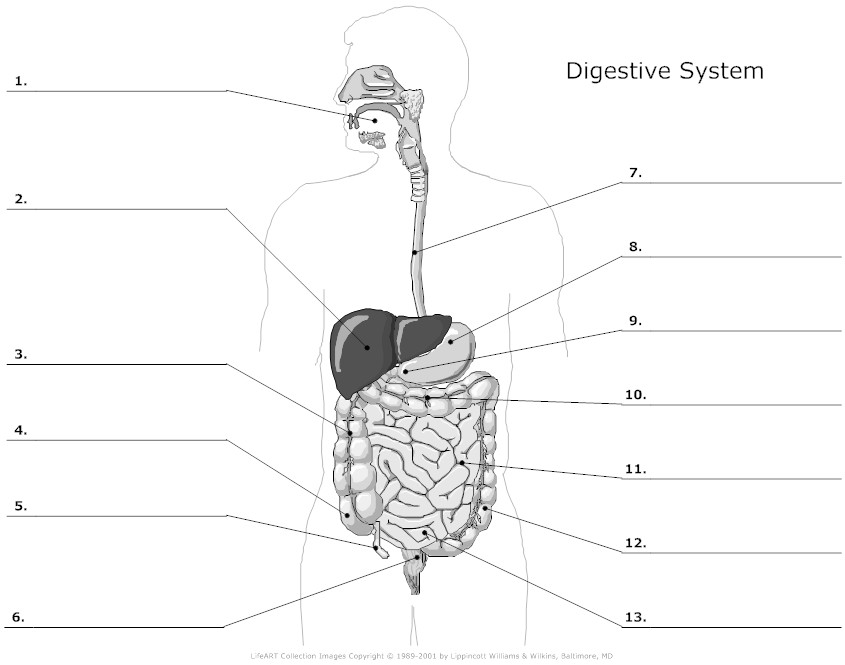
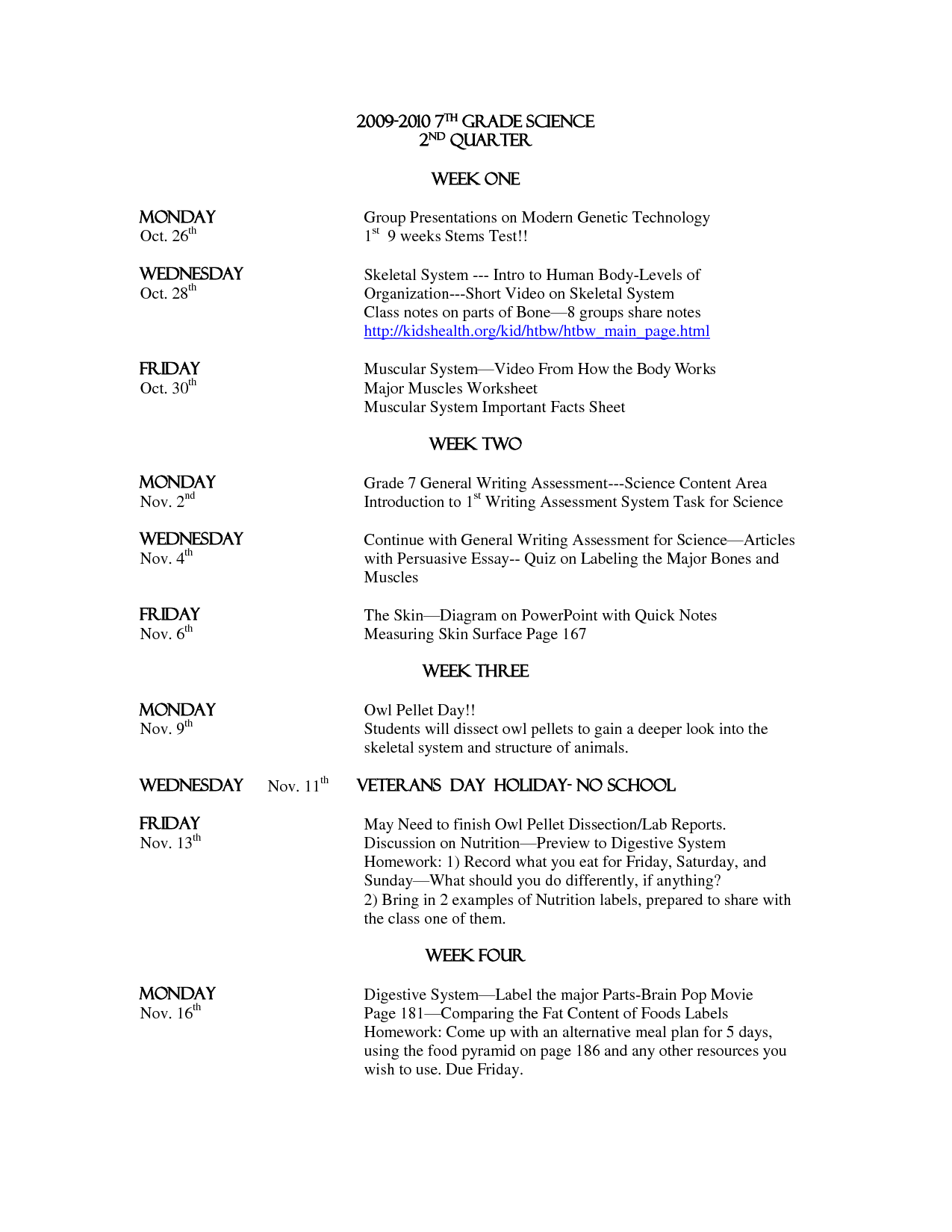
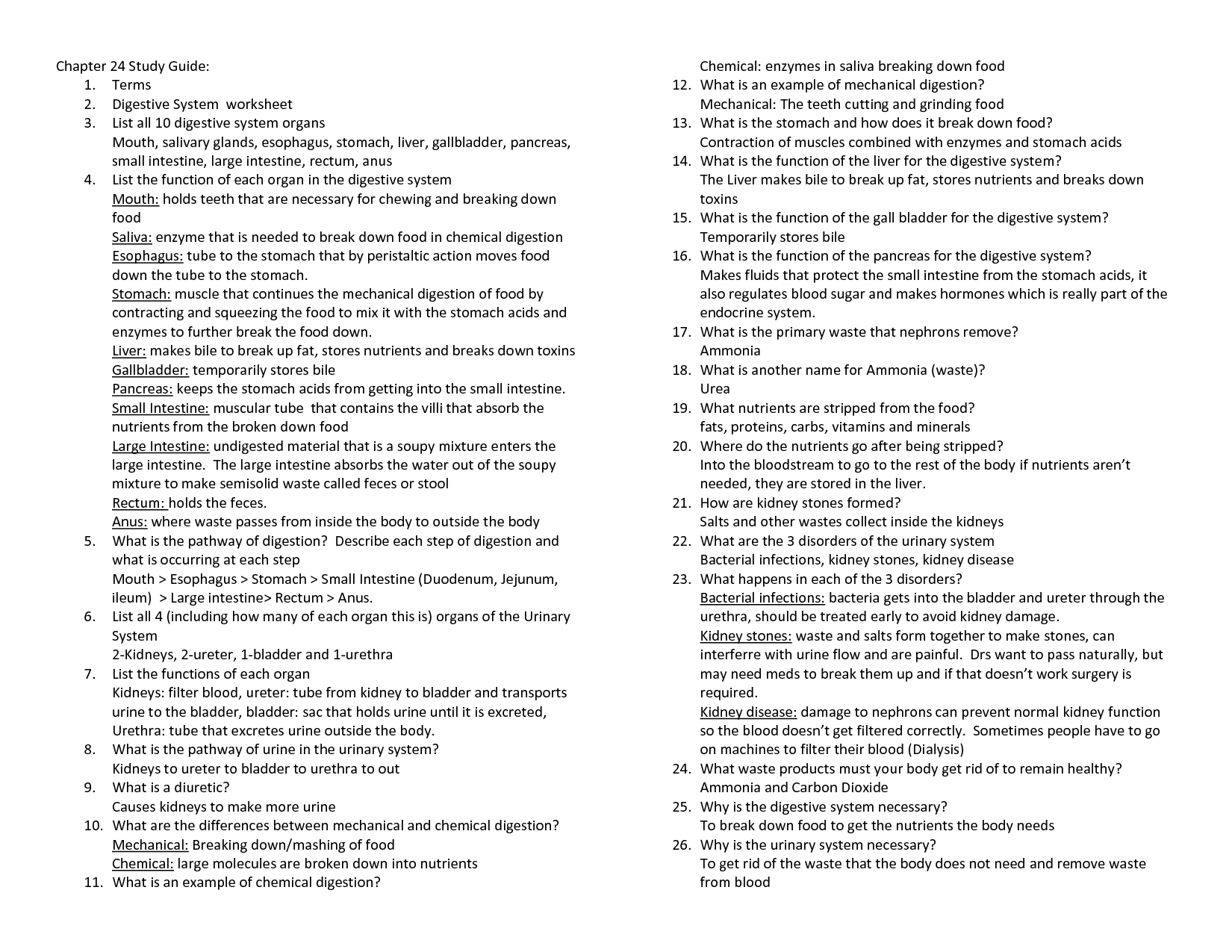
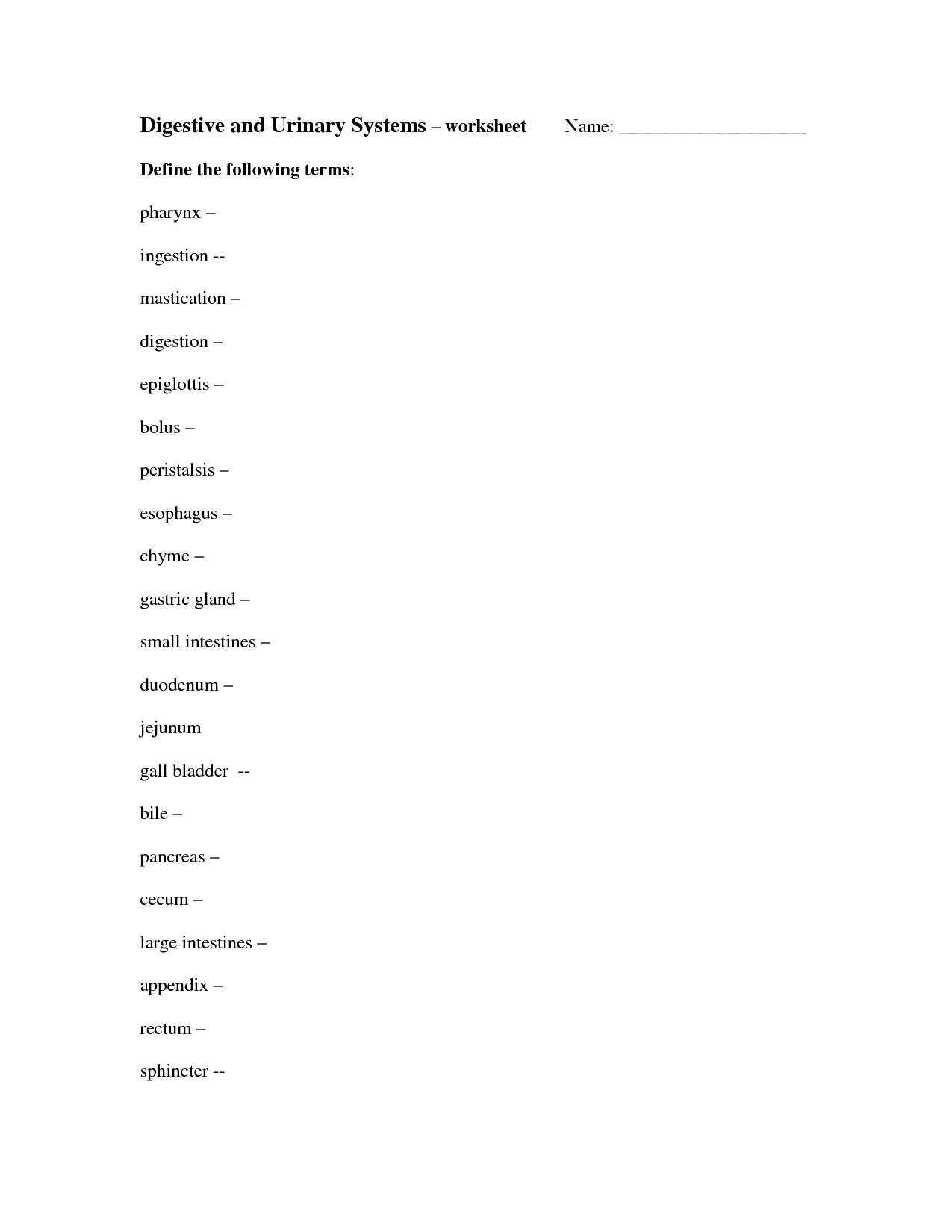
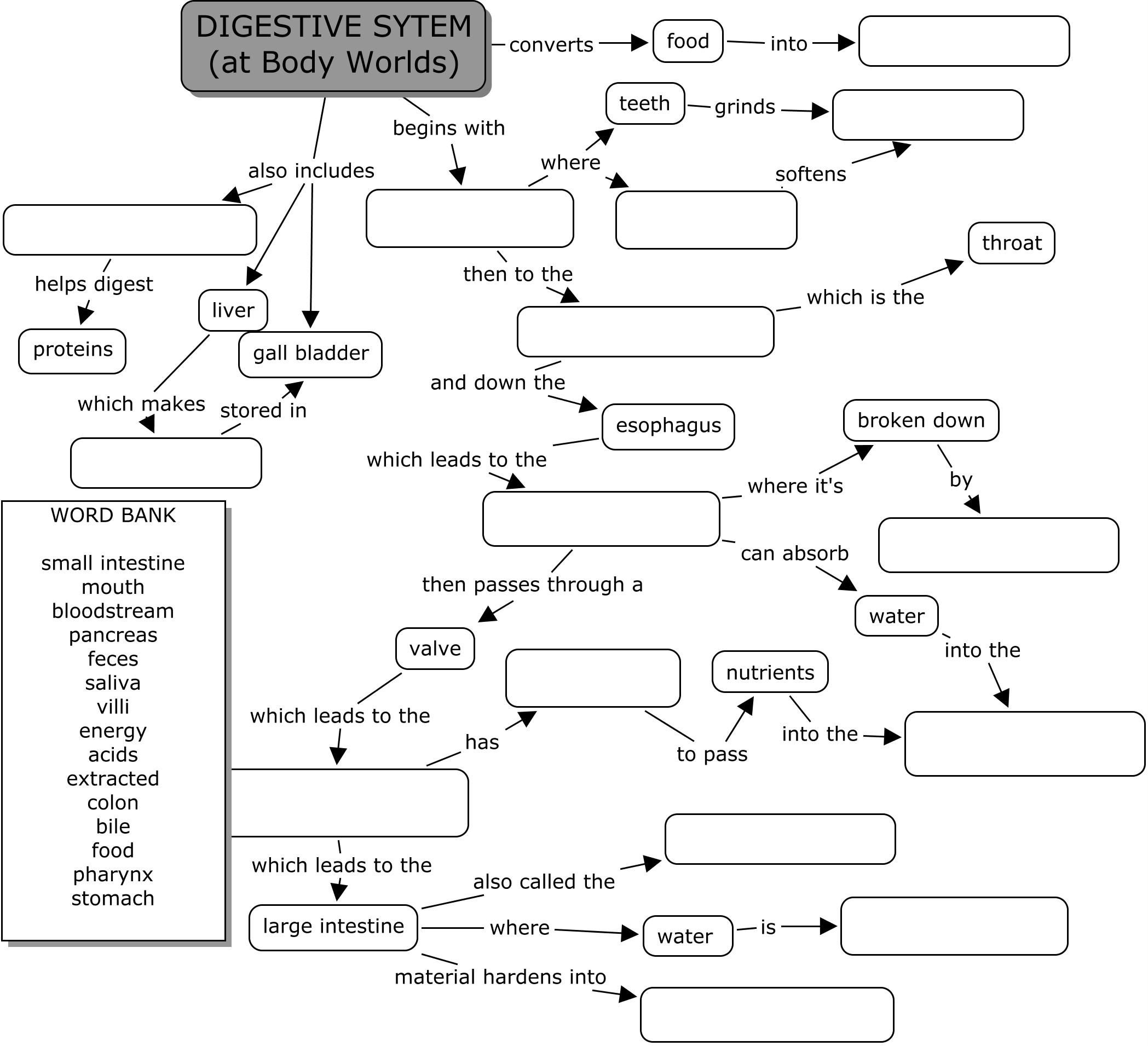
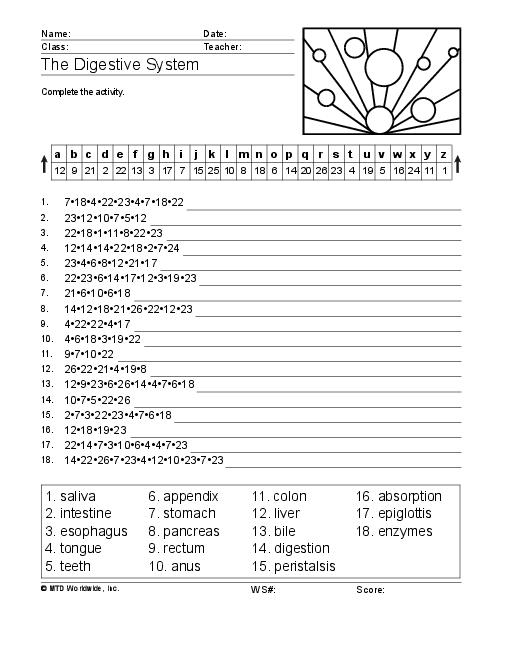
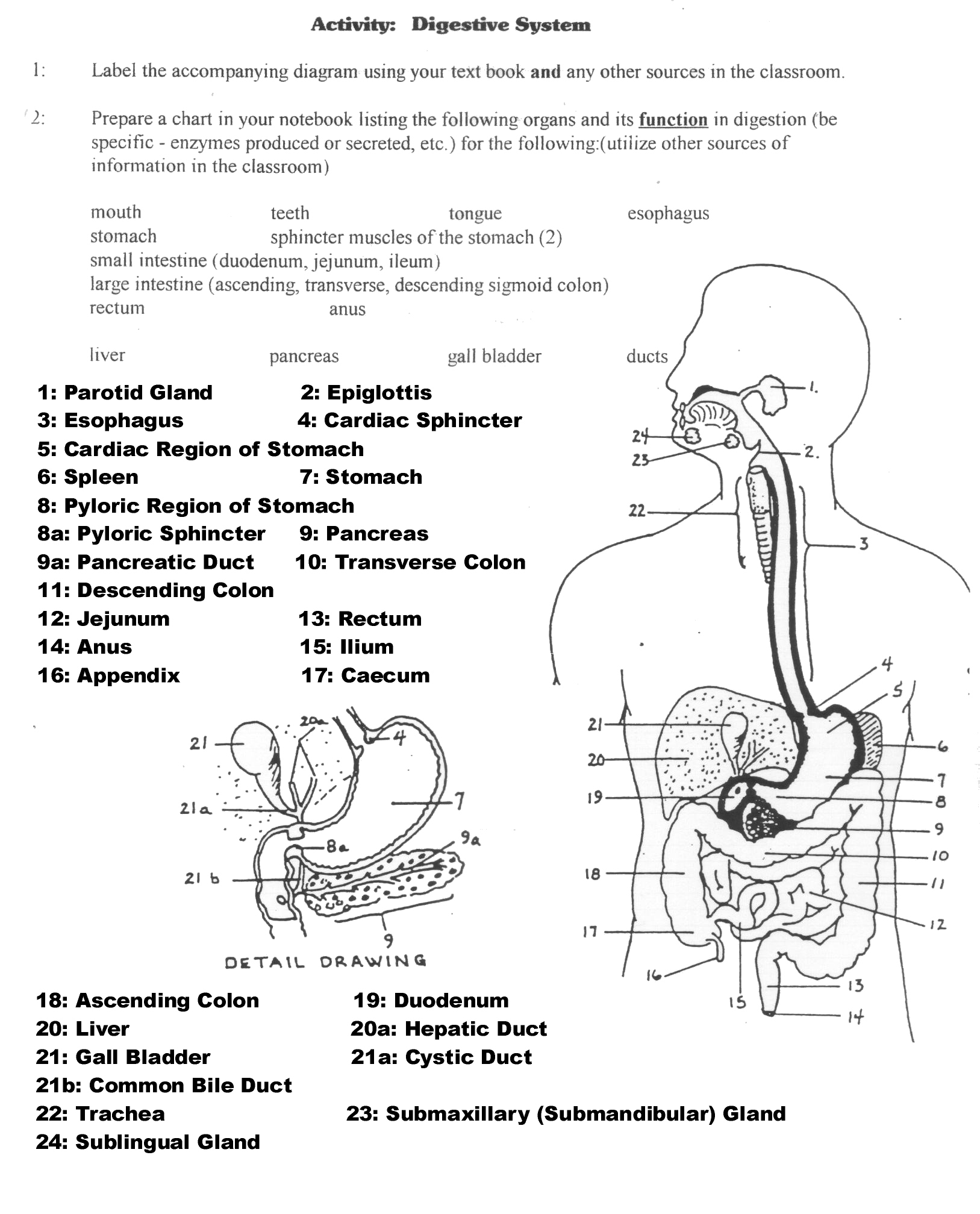














Comments